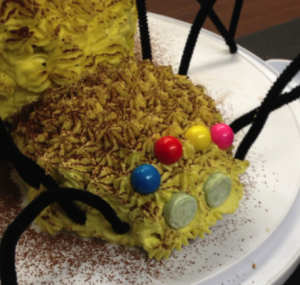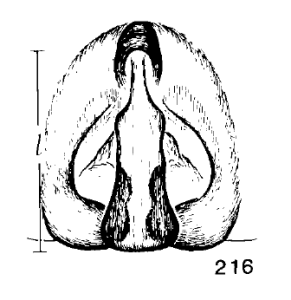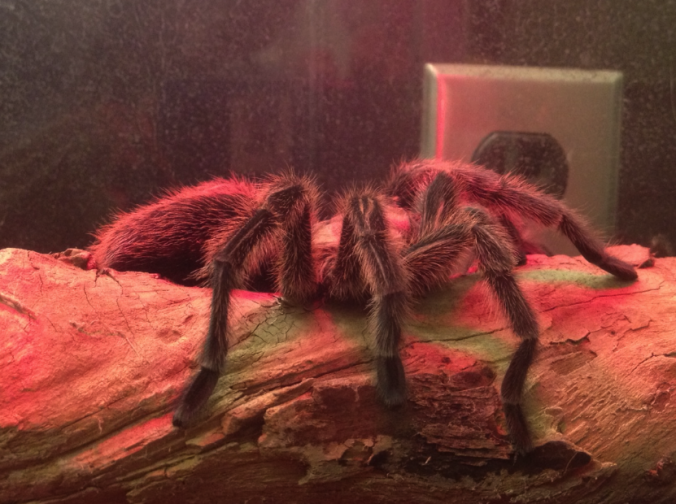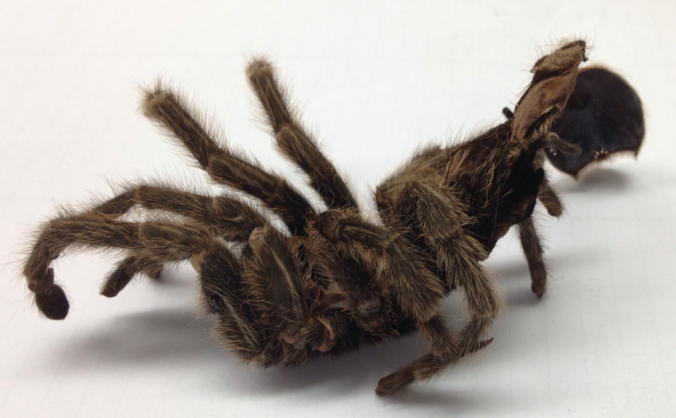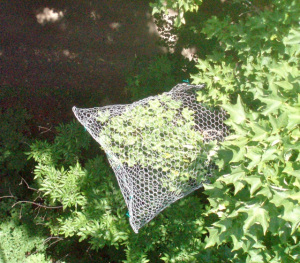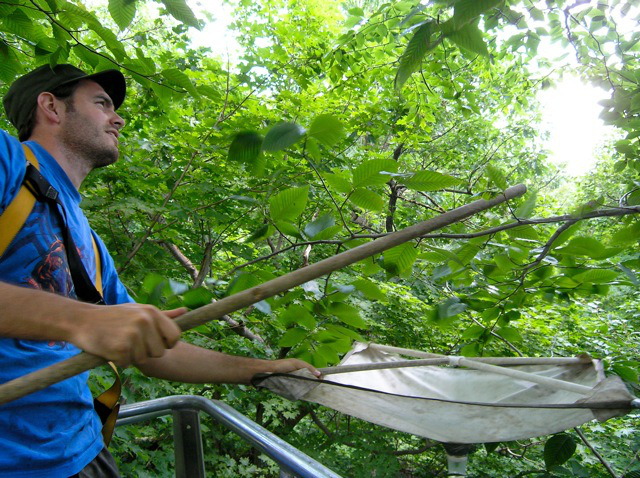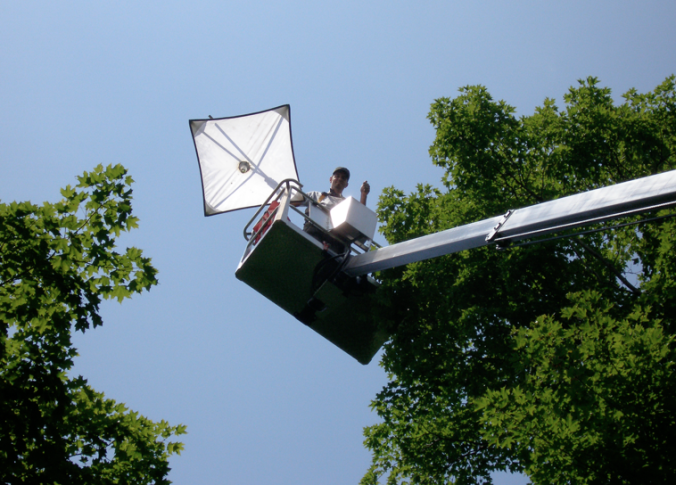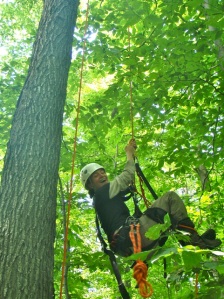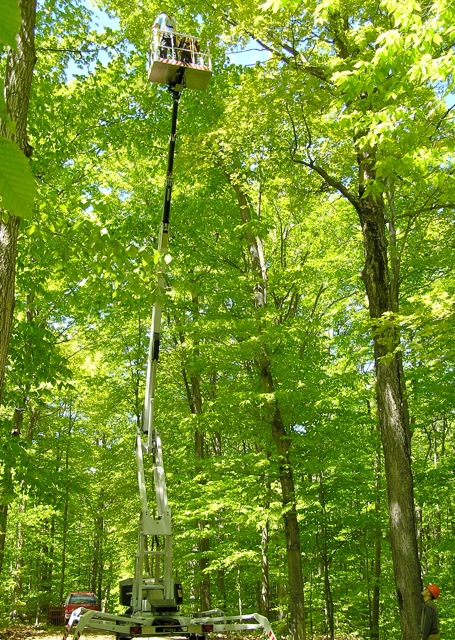Part 1 - Why Include Field Courses in Undergraduate University Curriculum?
Taking students outside the classroom, and into streams, forests, or fields, can be a rewarding experience for both the instructor and the student. I am reminded of this every autumn when I teach an introductory field ecology course as part of McGill University’s Major in Environmental Biology. In this class, we visit many ecosystems, and the hope is that students, through learning outdoors, gain additional insights, and exposure to a suite of experiences they would otherwise not get in a classroom.
That being said, what is the real pedagogical value of field courses? Or, why do we bother with field courses? Sure, it’s fun to be outside, and for those students who like wearing rubber boots and ‘toughing it’ outdoors, it’s much more interesting than a lecture hall. However, is there real value in terms of how content might be delivered or retained? Are field courses just a feel-good ‘gimmick’?
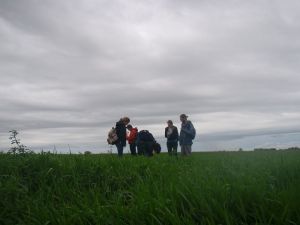
Undergraduate students doing field work in an undergraduate course: hands-on experience
These questions were at the forefront of a teaching workshop we had in May of 2012 (I wrote about this previously) - as part of that workshop, Graham Scott (from University of Hull in the UK), highlighted some of his research about the value of field courses, and this work resonated with a lot of us who teach field courses at McGill. I was particularly interested in reading his paper titled ‘The Value of Fieldwork in Life and Environmental Sciences in the Context of Higher Education: A Case Study in Learning About Biodiversity‘. In this work, there is a nice introduction that states how many people believe and assume fieldwork is valuable because (and I am paraphrasing here):
Field trips are rewarding and satisfying (i.e., FUN) for the instructor and student
Field courses will improve recruitment and retention (i.e., used as a tool to draw students into an academic program at University, and keep them in the program once they arrive)
Field courses enable students to gain key skills, and transferable skills
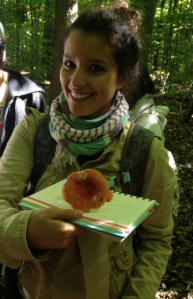
The mushroom collecting laboratory as part of an undergraduate University course about field biology
This has certainly been my (informal) assessment about the value of field courses. Students demonstrate (through enthusiasm, passion, motivation, and conversation) that they appreciate seeing and doing things outside of the classroom. Earlier this term, when walking around the Morgan Arboretum with my class, we stopped and looked at invasive Noway Maple trees, and my Teaching Assistant was able to show them how to identify the species. Many of the students were able to grab a leaf, right there and at that time, and look at the key characteristics. I like to think this visual and hands-on approach will help the content sink in, long-term, and that students will be able to remember the biology and natural history of Norway maples months or years after the course finishes. I also think they will look at all maple tress a little differently, and think about similarities and differences, and about introduced (or alien/exotic) species. These are big topics, of significance to conservation of biodiversity and environmental science at large. Or, in other words, I think this experience will lead to life-long learning.
Just last week we had a field trip devoted to collections and identification of mushrooms. The students split into groups and collected a diversity of fruiting bodies over the course of the three-hour laboratory. They seemed genuinely enthusiastic and in awe of the diversity of shapes, sizes, colours and smells of the mushrooms. I don’t think this experience could ever be replicated in a classroom setting, or even in an indoor laboratory. Being out in the woods, crouching down beside rotten logs, and learning how to watch for and collect mushrooms is something many of the students had never done before, and I like to think that this kind of experiential learning will stick. Life-long learning again! As I’ve mentioned in a previous post, I attribute my love of natural history to my exposure to nature as a child, through field guides and hands-on learning (although in this case the instructor was my father). Field-courses, at a University level, can inspire people the very same way!
In fairness, I have only presented anecdotes and it would be nice to look to the scientific literature for proper studies that test for the pedagogical value of field courses for undergraduate students. This takes us back to the work of Graham Scott and colleagues. Graham et al. worked with undergraduate students and separated them into two groups: one group received instructions and then did a hands-on (in the stream) collection of aquatic invertebrates, and the second group received the same instruction in an indoor laboratory setting (i.e., as a laboratory demonstration) but did not actually do the sampling in a stream. It’s also important to note that the students did not know, ahead of time, whether they were going to participate in a laboratory or field-based activity (there were told to expect ‘practical work’ and be potentially prepared for outdoor activities). In a laboratory, after a short break, from the field/lab work, the students were asked to separate and characterize (draw, label) the biodiversity of the aquatic invertebrates. These specific samples were collected separately (by the instructors) so there was no potential bias associated regarding who collected what samples.
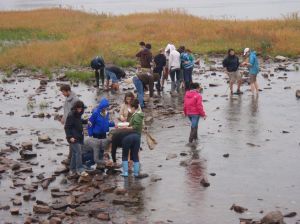
Undergraduate students sampling aquatic invertebrates in an undergraduate course at McGill University
The result? The authors document that the actual hands-on experiences had a real effect on students. Students that had the field component to the activity enjoyed and valued the experience, felt that they learned more effectively, and ‘…were better able to construct a taxonomic list of organisms that they had collected themselves’. Although more research on this topic is required (their sample size was relatively low), this paper does help provide some solid evidence that field courses are, from a pedagogical perspective, valuable.
Field courses are much more than a teaching gimmick: field course benefit a student’s academic experience. Field courses are an effective way to teach and learn course material. Of course, field courses are not relevant to all disciplines, but for students in biology or environmental science programs, field courses often appear in the curriculum, and I would argue they are en essential part of these programs. Universities ought to support and promote their field courses. When developing curriculum for an undergraduate program, field course should be as essential as a microbiology lab. We live in a world that requires people to have experience in all facets of their environment, from shopping malls and urban centres, to corn-fields, marshes, and forests. We are doing a disservice to undergraduate students if our teaching does not venture into the field. That is the “why”.
To finish, I really appreciate a quote from the Discussion of Graham et al.’s paper: ‘Learning is enhanced in the field’. Indeed - this is exactly my perception, and my experiences with field courses suggest this is true. Feedback on my course evaluations speaks to this, also. In my area of teaching, field courses will remain central to the academic program of Environmental Biology, and I encourage others to consider adding field courses to their own program.
Naysayers: We often hear that field courses are too expensive, too difficult, too logistically complicated, and can be done only with small groups of students. These are not valid arguments and in a future post, I will discuss these issues in detail. Part 2 will, therefore, deal with the “how“. Stay tuned.
Reference:
Scott, G.W., et al. (2012). The Value of Fieldwork in Life and Environmental Sciences in the Context of Higher Education: A Case Study in Learning About Biodiversity Journal of Science Education and Technology, 21, 11-21 DOI: 10.1007/s10956-010-9276-x

